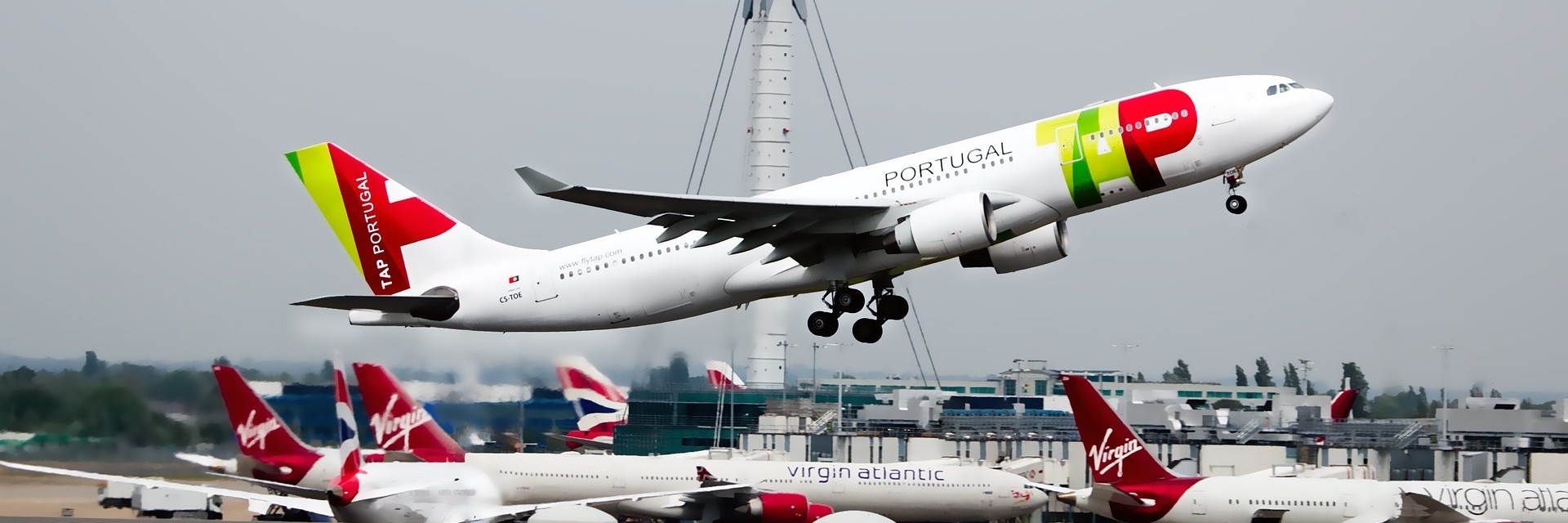The Safest Airlines to Fly With, by Accident Statistics
Flying is the safest transport mode, followed of bus and train. But given that there are over 150,000 daily flights across the world, accidents end up happening in one way or another.
In this article we analyze the accident record of the 90 airlines with largest passenger fleet. The accident data is taken from the Aviation Safety Network, a leading reference organization in this topic. We should stress that none of the airlines analyzed here are considered unsafe. Inevitably, some might appear less safer than others due to having more accidents, but their overall safety is still orders of magnitude higher than cars.
Accidents
The number of flight accidents has been decreasing steadily over the past decades. Therefore, to give a sense of which airline is safer as of today, we only consider accidents which occurred from 2010 onwards. This takes out some large airlines such as LATAM or VietJet, which commended operations in 2012 and 2011, respectively.
We count all accidents which occurred when passengers were inside the plane. These could take place while boarding at the gate, taxiing through the airport, taking-off, cruising, etc. Criminal occurrences such as hijacking or sabotage are not included since these should not be associated to the airlines' safety standards.
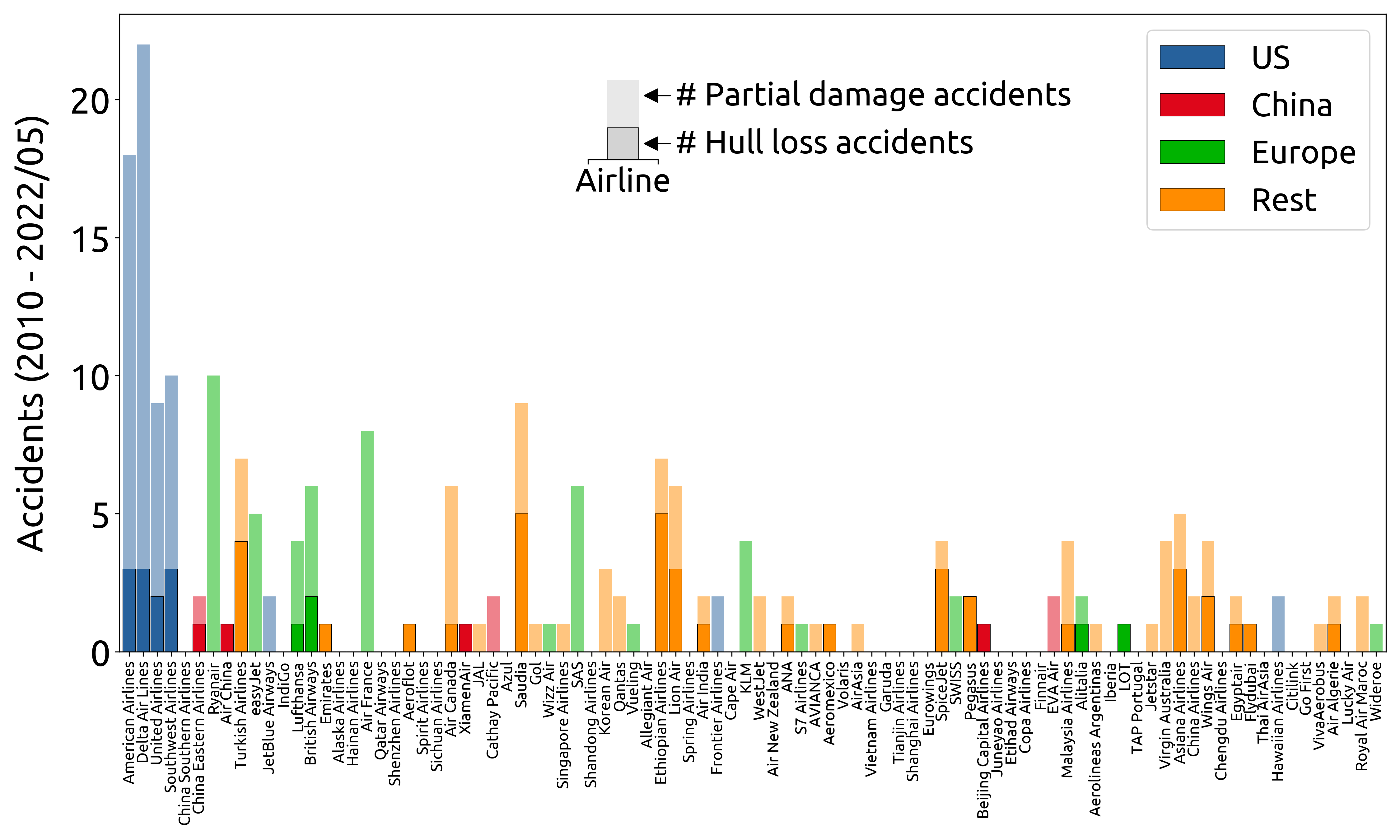
The considered accidents can be split in two types:
There are many hull loss accidents which resulted in zero fatalities. Still, they tend to represent a more serious incident than a partial damage.
In the figure we can see that Delta Airlines is the one with highest number of accidents, three of them being complete hull losses. Many airlines have a zero accident record since 2010, highlighting how safe flying is.
Fleet size
The total number of accidents is not a good metric to determine which airline is safest. American Airlines is the largest airline in the world, so they could accumulate a larger number of accidents just because of the larger number of daily flights.
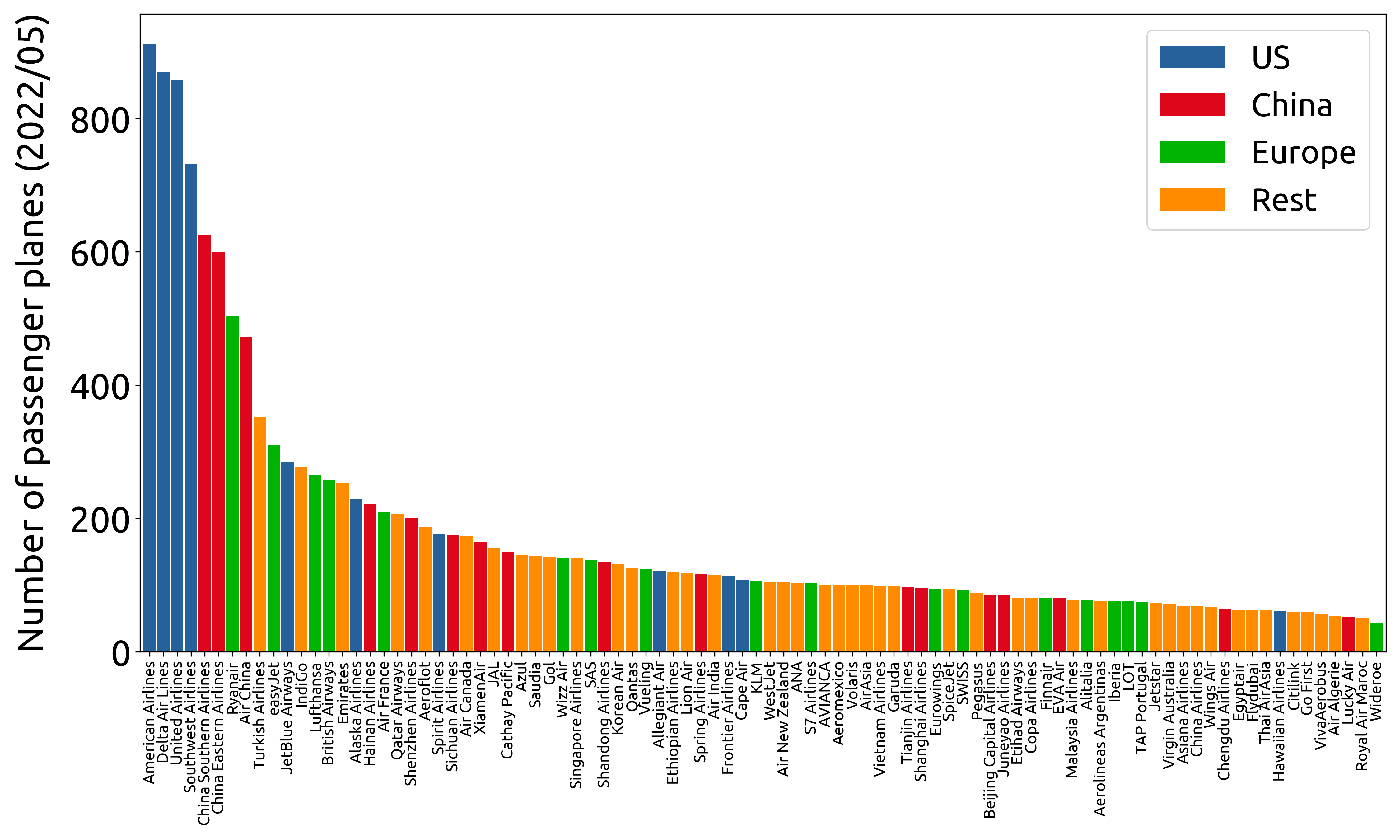
To compensate for this, we combine the number of accidents with the fleet size of each airline (passenger planes only). We agree that the fleet size is not the optimum parameter here; the best would be the total number of passenger flights from each airline since 2010. But due to the difficulty in gathering such data, we choose the number of planes as a reference, which should also provide an adequate scaling.
We can see that American Airlines has about 910 passenger planes, a gigantic fleet compared to Norway's Widerøe with 43 planes, the smallest airline considered here. It's also interesting to see that the airline size does not decrease linearly. That is, the largest airlines accumulate most planes: American Airlines’ (#1) fleet is 8.5 times larger than KLM’s (#45), but KLM’s fleet is just 2.5 times larger than Widerøe’s (#90).
Accident rate
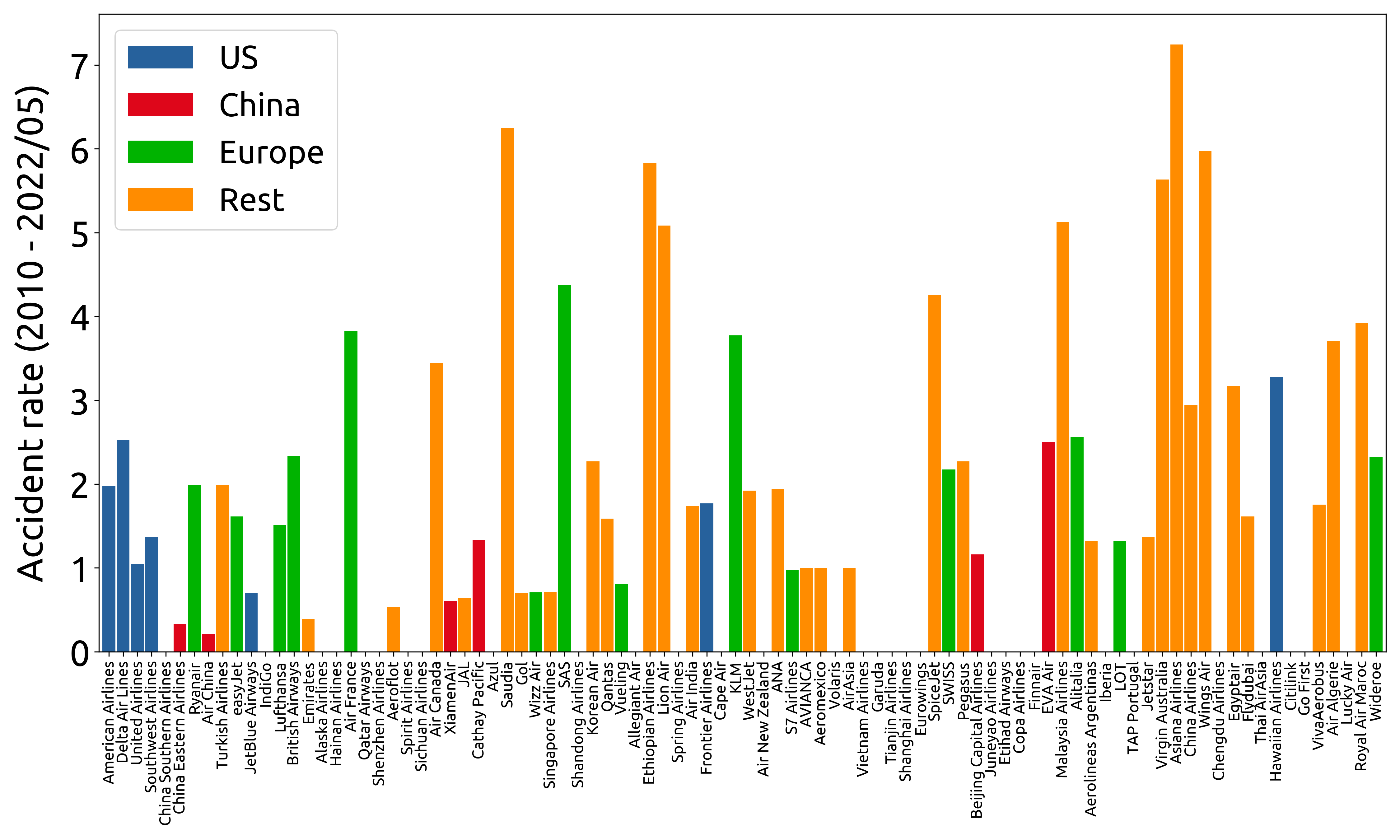
The metric of accident rate that we use here is the number of accidents divided by the fleet size, all of it multiplied by 100. This value could be roughly regarded as the percentage of an airlines' planes involved in an accident
Accident rate = 100 x ((hull loss accidents + partial damage accidents)/fleet size)
By using this metric we can see that the high number of accidents from Delta or American Airlines represent a small accident rate, given their large fleet. On the other hand, small airlines with several accidents count as a high accident rate.
As it was mentioned earlier, hull loss accidents represent a larger loss than a partial damage. To take this into account, we also computed the accident rate by multiplying the accidents from partial damage by a factor of 0.5, so that their weight compared to a hull loss becomes lower.
Weighted accident rate = 100 x ((hull loss accidents + 0.5 x partial damage accidents)/fleet size)
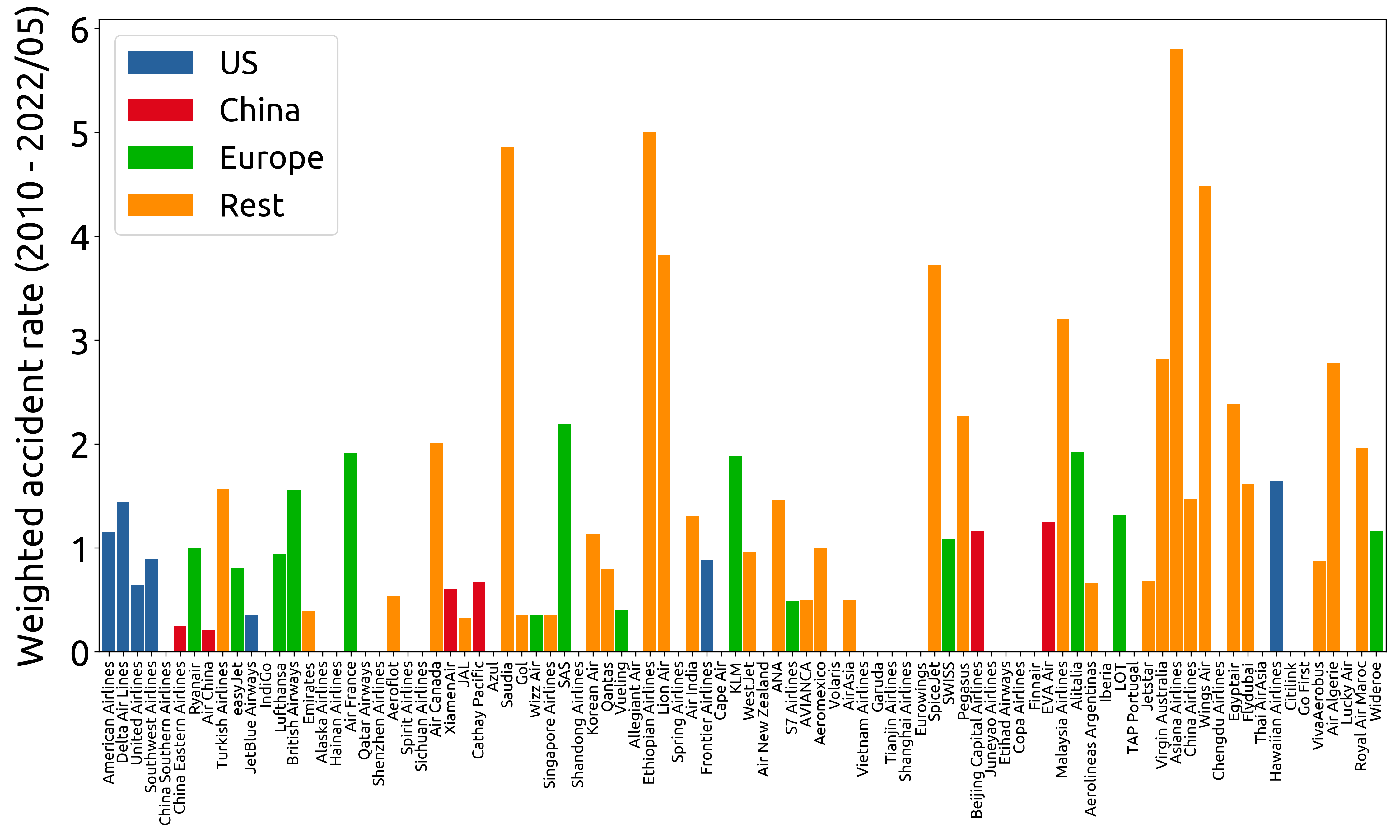
The results from this new metric are similar in terms of the safest and least safe airlines. However, some airlines such as Virgin Australia and Air Canada see a reduction on the accident rate, since most of their accidents were just partial damages. For example, the last one from Virgin Australia, in 2017, was that the pilot pushed the plane too hard on the runway when landing, possibly damaging some structures and requiring a safety inspection.
Since the results were similar for the non-weighted and weighted accident rates, the next sections include only the non-weighted metric.
Safest airline: China Southern Airlines
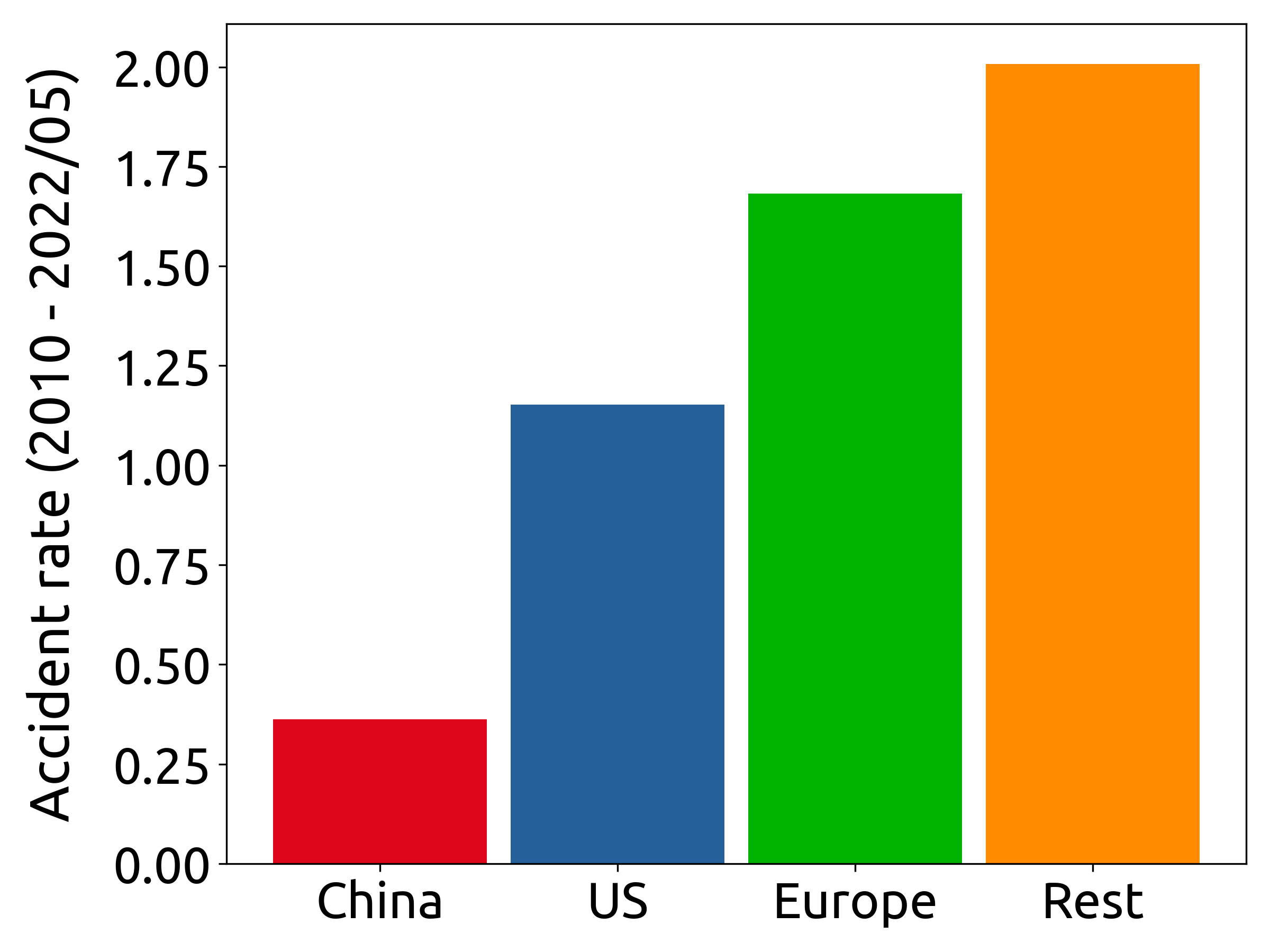
There are many airlines with zero accidents since 2010, all of which could be considered equally safe. The reason why we choose China Southern Airlines as the safest is because it's the largest airline with zero accidents. This means that it should have encountered more dangerous situations than smaller airlines, but still managed to avoid accidents in all of them. More technically speaking, the statistical error of the accident rate in large airlines should be lower than in smaller ones, given their larger amount of flights.
The second one could have been China Easter Airlines, but its recent crash of flight MU5735 in March 21 has already given it one hull loss. Therefore, the second position would go to IndiGo, recently established in 2006.
Comparing the accident rate by region we can see that China is the actually the safest one. The United States is the next in line, but its accident rate is 3 times larger. Then comes Europe, with a rate 1.5 times larger than the United States.
Why is China so safe for flying? In short, the regulations on flight safety seem to be very well implemented. The three largest airlines in China are (surprise) state owned: China Southern Airlines, China Easter Airlines and Air China. Therefore, the state can both regulate, perform and inspect the safety standards of it's own airlines. This system doesn't seem to work well everywhere. As an example, state owned EgyptAir has been sanctioned several times for their negligence in maintenance. It is just that China managed to implement it very well.
The success of Chinese aviation safety has been sometimes linked to the worrying increase of accidents in 1992 and 1993, where a total of 6 fatal accidents occurred. This could be the reason why the government decided to tighten the regulations and maintain them that way until today.
Least safe airline: Asiana Airlines
In the other end, the Korean Asiana Airlines appears as the least safe due to its 3 hull losses and 2 partial damages since 2010. These numbers are quite high given their small fleet size of just 69 planes. Its last hull loss was in flight OZ162 in 2015, landing in Hiroshima’s airport. The landing gear was partially destroyed due to collisions with the runway lights, an engine ended up sliding over the runway, a fire started, but fortunately everyone evacuated safely.
The numbers for the second in line are not very good either: Saudia airlines, 5 hull losses and 4 partial damages since 2010, for a fleet of 144 planes. The last hull loss was in flight SV3818 in 2018: emergency landing due to a detected malfunction of the hydraulic system responsible for the landing gear. Unfortunately, the landing gear could not be fully extended and the plane slid on its belly over the entire runway. No fatalities either.
Low-cost airlines are the safest
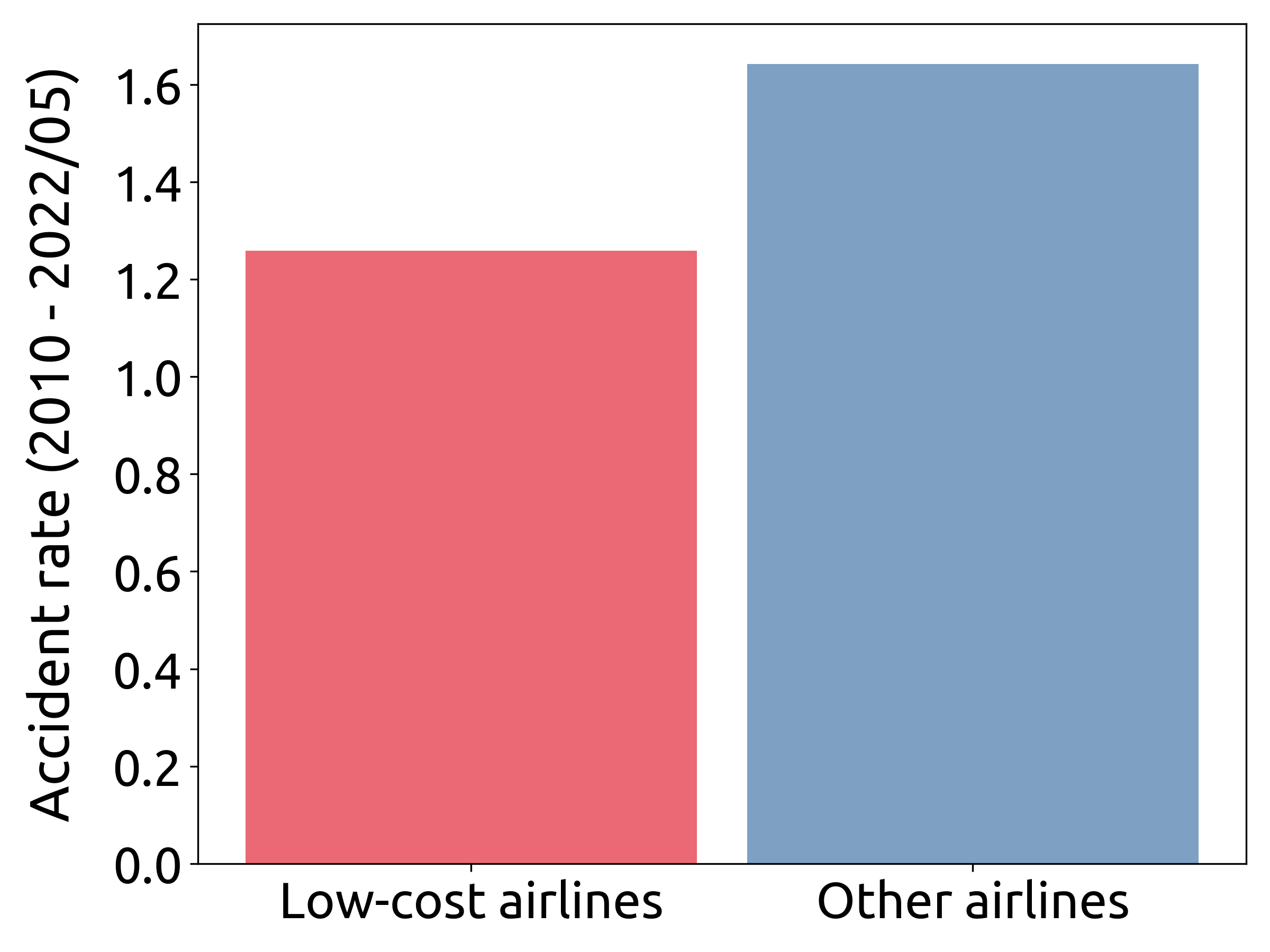
Do low-cost airlines cut on safety? No! Comparing all low-cost airlines analyzed here vs the rest shows that they are in fact slightly safer. The difference in the accident rate is small, but sufficient to conclude that low-cost doesn’t mean less safety.
An accident for an airline is in fact a huge economic loss. Therefore, all airlines, low-cost or not, strive to maintain their fleet in the best shape possible and follow following all the maintenance regulations.
The low-cost comes from the services provided to passengers. Ryanair, the world's largest low-cost airline, is famous for placing their airports in remote but cheaper areas from the city, while sill branding the airport as if it was from there. In Sweden, Skavsta airport is branded as Stockholm, while being 100 km (62 miles) away from it. Food services, luggage restrictions, customer service… these are all cut by the low-cost. But not safety.
References
The Aviation Safety Network. Database.
South China Morning Post. China turned around its air safety record, but how safe is it?.


